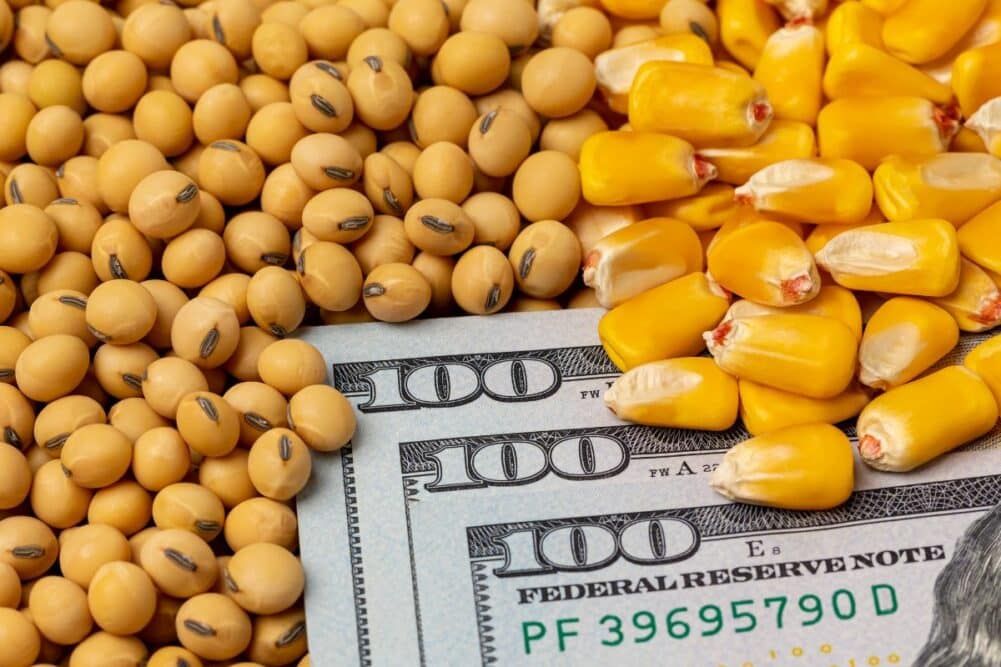
Agriculture industry analysts say the constantly shifting landscape of US tariffs, retaliatory actions, reciprocal tariffs, and possible delays makes the uncertainty of the situation almost as bad as the tariffs themselves.
“It gets very difficult to price a product,” said Tanner Ehmke, grains and oilseeds economist with CoBank. “Are we going to have a tariff or not? It’s hard to buy and sell something when you don’t know the price.”.
Grain elevators and merchandisers have seen their forward bookings disappear, he said. Normally, they make sales five to 10 months out, and now they’re seeing it move to the spot market.
“If there was just a tariff in place, you can price it into your basis, but that’s not the case right now,” Ehmke said. “It’s too volatile. It becomes really difficult to book freight, it becomes a lot more complicated to set a local basis.”
The White House on April 2 announced sweeping new tariffs on more than 50 countries, including a combined 54% levy added for Chinese goods since President Donald Trump took office in January. Nations have responded with various retaliatory and reciprocal tariffs on US goods.
“This is very challenging,” said Stephen Nicholson, Rabobank’s global sector strategist for grains and oilseeds. “It’s very uncertain. It’s a lot of volatility, and frankly, it’s just exhausting.”
Compared to Trump’s first presidential term and tariffs, this time the president has gone all in and is taking a very aggressive stand, Nicholson said.
“They’re more aggressive than we thought they would be and in 2018-19, where they seemed a little bit more aimed at China, this is a blanket across the board,” he said.
But China, the United States’ largest trading partner outside of USMCA, is still in the crosshairs. China retaliated with a 34% levy on US goods, on top of the 10% to 15% it had on select products earlier this year. On April 7, Trump said he would impose an additional 50% tariff if the nation did not withdraw its 34% counter-tariff.
Tariffs are not being used as a negotiating tool; they are policy, Nicholson said.
“This is the policy we’re going to do because we have to reduce trade deficits and we have to raise revenue,” he said. “This is what we’re going to have to live with. It also appears the administration this time is not really swayed much by what the market reaction is, whether its equities or commodities.”
The Nasdaq Composite entered a bear market on April 4 and the US stock market lost over $5 trillion in value for its worst week since 2020.
Commodities are still trading on the low end of the price range that was established last summer, Nicholson said, and it seems to be holding. If this year’s harvest is normal, and the market is in the same spot come August and September, then there’s a bigger problem, he said.
“Soybeans aren’t going to be going to China like they did this fall, and corn is not going to China, or going any place, because we’re just not competitive,” Nicholson said. “That’s a concern going forward.”
Wheat, soybeans and rice are likely to see the biggest impacts because a significant amount is exported.
“Even if exports would be cut in half, that’s a pretty big chunk of volume that has to come back in the domestic market and gets added to the balance sheet,” Nicholson said.
The US crop is not yet in the ground, and with the way soybeans have been performing, corn acres might grow, Ehmke said. Soybean futures dropped to under $10 a bushel last week.
The US Department of Agriculture predicted 95.3 million acres of corn in its March 31 Prospective Plantings report, but Mexico is still a reliable buyer and President Claudia Sheinbaum said on April 7 that her government would like to avoid imposing retaliatory tariffs on the United States. Mexico is the No. 1 market for US corn and wheat and No. 2 for soybeans, Ehmke said.
“That’s an important development that we still have Mexico who hasn’t retaliated, yet,” he said.
The tariffs could be devastating for countries with smaller economies that rely on trade with the United States. Thailand, for example, exports a significant amount of rice to the United States.
“Perhaps they can find other markets; supply chains are going to have to adjust,” Ehmke said. “But that’s at a higher cost and a longer supply route. They may not have the infrastructure to make it happen so easily. It’s not like they can just pivot to another country on a dime, as we have figured out, and move to another market.”
US farmers and agribusinesses need to communicate to the administration and to their members of Congress the possible consequences of the tariffs, Nicholson said.
“I don’t know that there’s much else we can do,” he said. “I think that’s our best bet at this point. Congress is where that pressure can come from, particularly members of the House who are up for re-election in 2026.”
During extreme periods of volatility, such as what the world is experiencing right now, relationships matter more than ever, Ehmke said.
